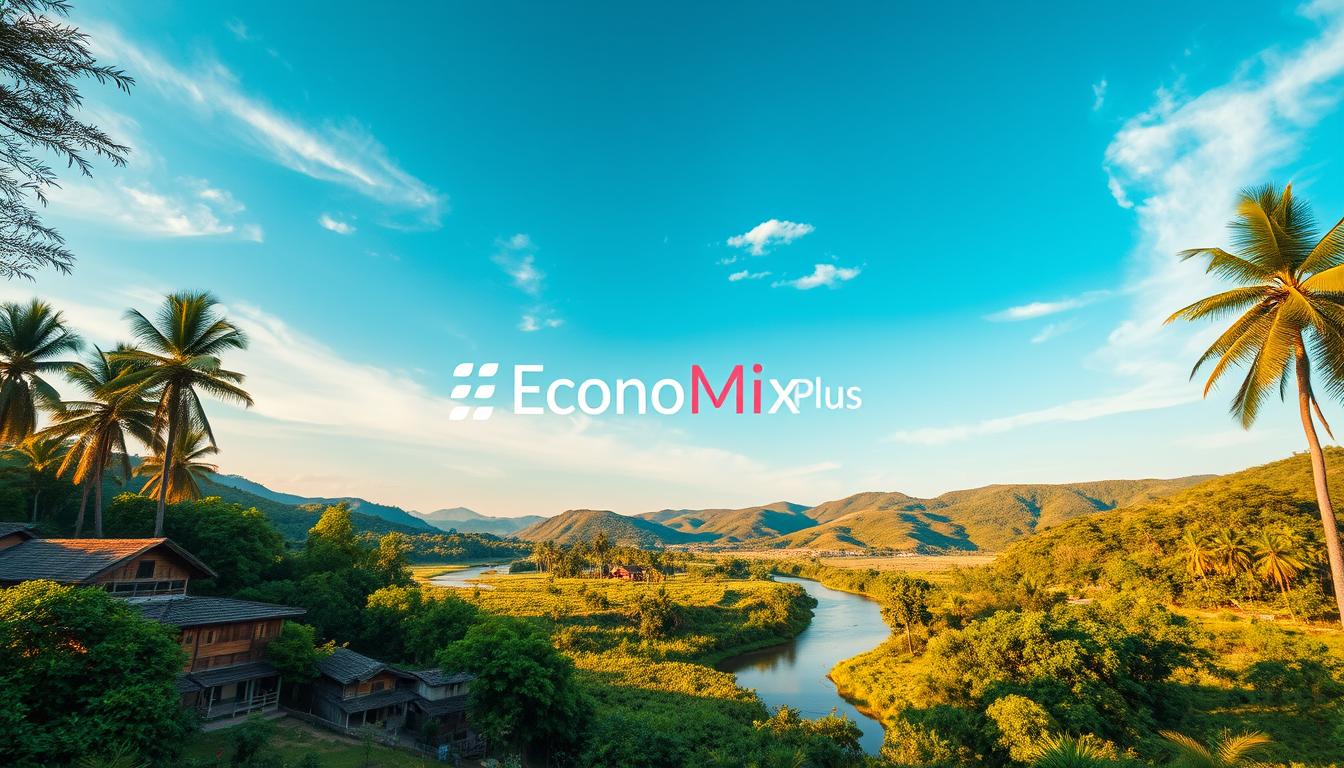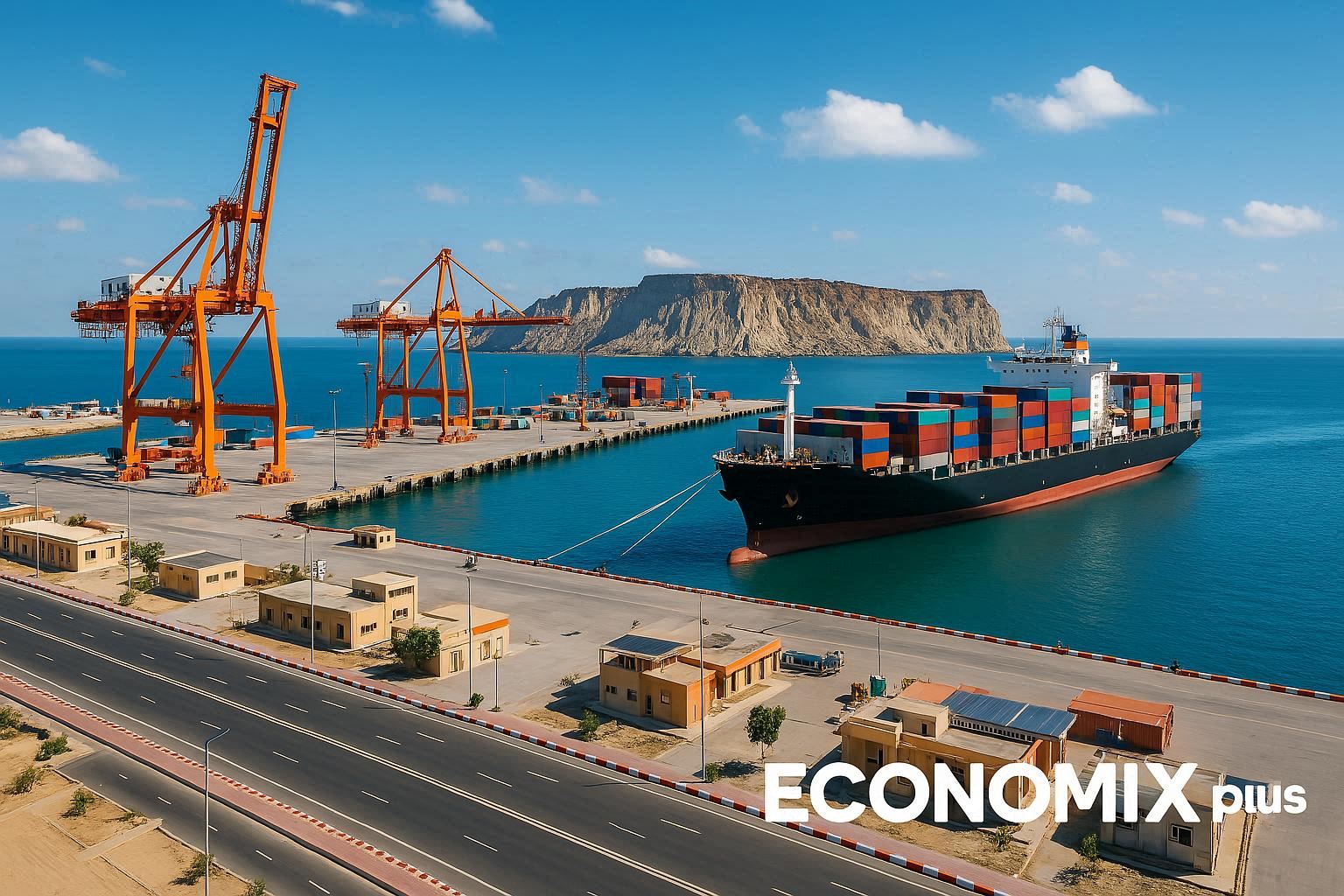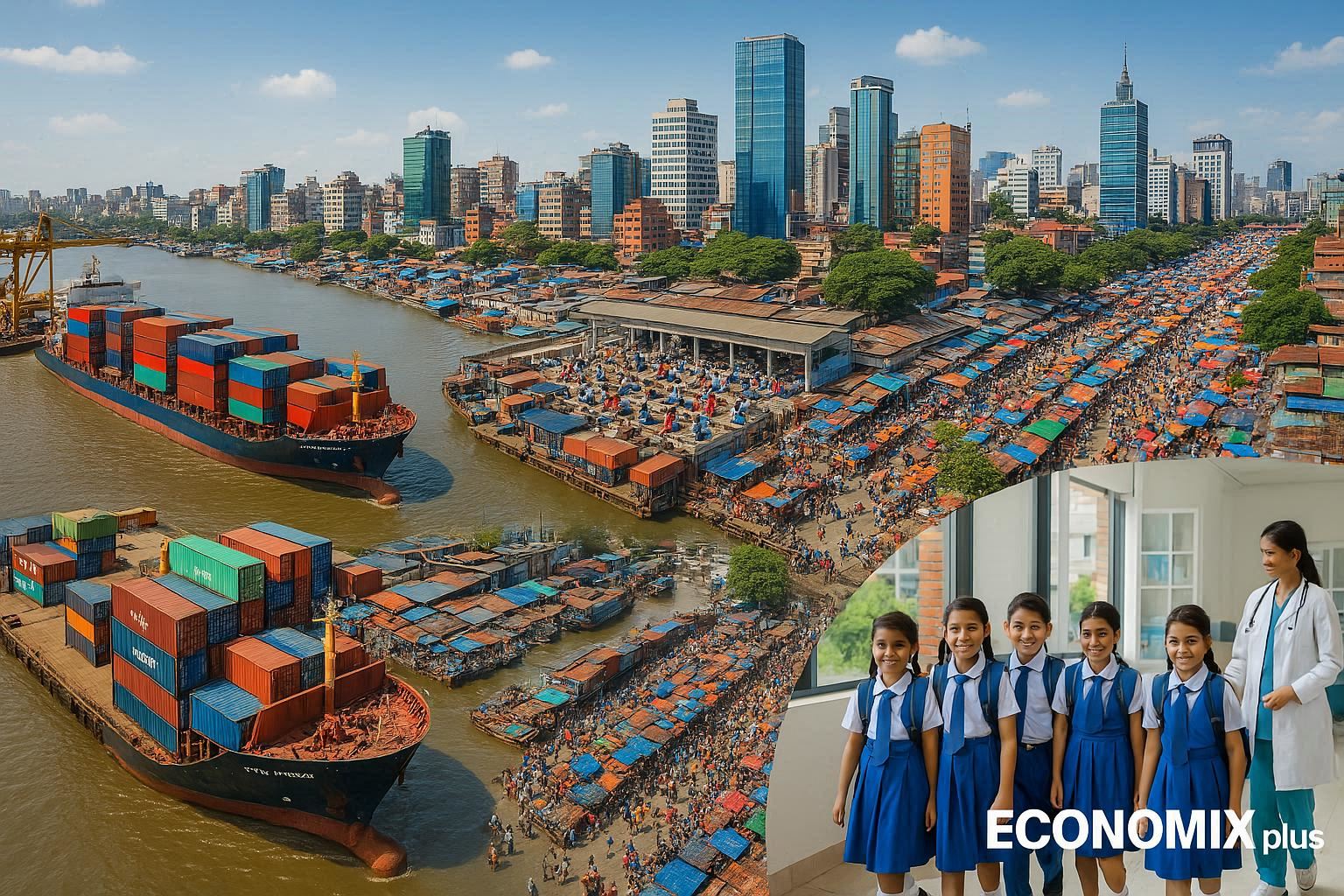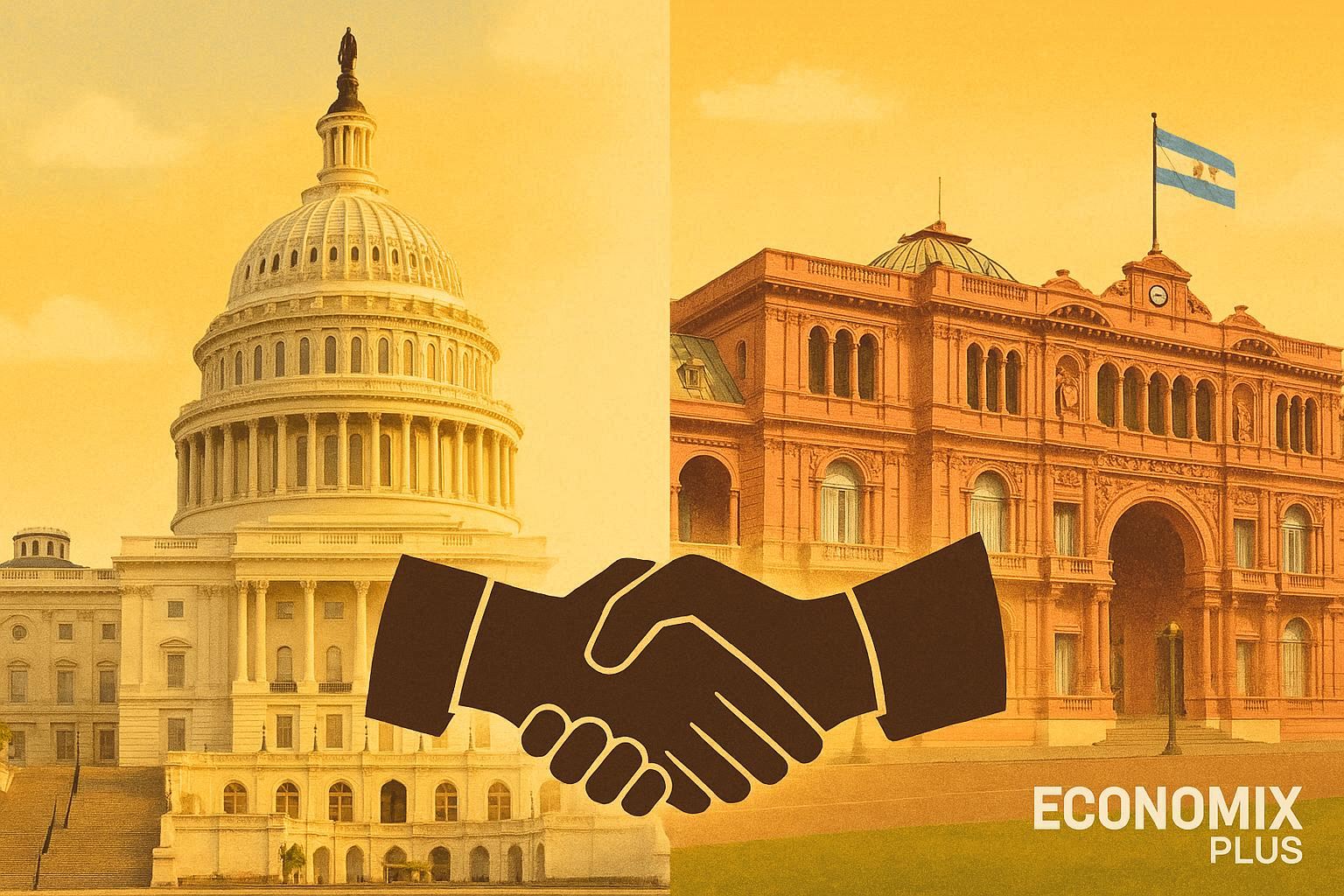Imagine a tropical paradise where lush jungles meet crystal-clear waters. Now picture it thriving economically while protecting its ecosystems. How does a nation achieve this delicate balance? For decades, Southeast Asia’s most visited destination has transformed its approach to travel, proving that economic success and environmental stewardship can coexist.
Since its humble beginnings in the early 20th century, the Tourism Authority here has evolved into a global pioneer. The agency shifted focus from mass tourism to eco-friendly travel experiences, launching groundbreaking programs like the SHA certification for health safety and the 7Greens framework for resource conservation.
Local communities now play a vital role in this strategy. Artisans teach traditional crafts to visitors, while farmers offer organic cooking classes. These initiatives generate income without compromising cultural heritage. Recent data shows that regions adopting these models saw 27% higher tourist satisfaction compared to conventional hotspots.
Key Takeaways
- A national tourism authority reinvented itself from promoting quantity to prioritizing quality experiences
- Health and sustainability certifications now guide visitor choices across accommodations and activities
- Grassroots programs empower rural communities through skill-sharing and cultural preservation
- Environmental protection measures increased while maintaining strong economic growth
- Visitor spending patterns shifted toward eco-conscious businesses and local enterprises
Introduction to Sustainable Tourism in Thailand
Travelers today seek more than picturesque destinations – they want experiences that respect both nature and culture. This shift drives the global demand for sustainable tourism, which balances environmental care, economic benefits, and community well-being. Increasingly, visitors are drawn to destinations that offer authentic interactions with local cultures, where they can learn about traditions and participate in community activities.
This not only enriches their travel experience but also supports local economies and encourages the preservation of cultural heritage. As awareness grows, travelers are becoming more conscious of their environmental footprint, leading to a preference for eco-friendly accommodations and responsible travel practices that contribute to the sustainability of the places they visit.
Defining Sustainable Tourism and Its Importance
Sustainable tourism operates on three principles: minimizing ecological impact, supporting local economies, and preserving cultural heritage. Unlike conventional travel models, it prioritizes long-term resource conservation over short-term profits. The Tourism Authority has embedded these values into campaigns like “Amazing Thailand,” aligning with UN Sustainable Development Goals.
The Role of Tourism in Promoting Economic Growth
By focusing on responsible travel practices, the nation transformed tourism into a tool for equitable progress. Rural villages now thrive through:
- Handicraft workshops preserving ancient art forms
- Farm-to-table culinary tours boosting agricultural income
- Eco-lodges managed by indigenous communities
Digital platforms amplify these efforts, with 63% of visitors using apps to book eco-certified accommodations. “When communities benefit directly, preservation becomes profitable,” notes a TAT strategy director. This approach helped tourism contribute over 15% to national GDP while protecting fragile ecosystems.
Evolution of the Tourism Authority of Thailand
How does a nation reshape its tourism identity while preserving its cultural soul? The answer lies in six decades of strategic reinvention that have allowed Thailand to blend modern tourism practices with its rich heritage. This journey began with a vision to attract visitors while ensuring that local traditions and values remained intact. What began as a modest promotional office now leads global conversations about responsible travel, emphasizing the importance of sustainability and community involvement in tourism development.
Historical Milestones and Policy Developments
The Tourist Organization of Thailand (TOT) launched in 1960 with 12 staff members. By 1979, it evolved into the Tourism Authority of Thailand, expanding its reach to 25 countries. Three game-changing moves redefined the tourism sector:
- 1996: Introduction of Thailand Tourism Awards recognizing eco-friendly businesses
- 2002: “Unseen Thailand” campaign shifting focus to lesser-known destinations
- 2011: 7Greens initiative promoting renewable energy and waste reduction
Transforming Thailand’s Tourism Landscape
Strategic planning turned postcard destinations into classrooms for sustainable practices. The authority Thailand now trains 4,000 locals annually in heritage preservation techniques. “We don’t just sell trips – we cultivate guardians for our traditions,” explains a TAT policy director.
Recent certification programs verify 3,200 hotels meeting strict environmental standards. This development approach increased protected natural sites by 18% since 2015 while maintaining visitor growth. Communities once bypassed by mass tourism now thrive through bamboo raft tours and organic dye workshops.
Thailand’s Journey to Sustainable Tourism Revenue
How do destinations generate income while protecting their natural treasures? Forward-thinking strategies now reshape how communities profit from visitors without sacrificing ecological health. Over 40% of recent tourism earnings stem from green tourism models that prioritize long-term value over quick gains. These innovative approaches not only foster economic resilience but also promote a deeper understanding of environmental stewardship among both tourists and locals.
By emphasizing sustainable practices, destinations can attract a growing segment of travelers who seek authentic experiences that contribute positively to the places they visit. This shift encourages communities to engage in practices that preserve their cultural and natural heritage, ensuring that the benefits of tourism are felt widely and equitably.
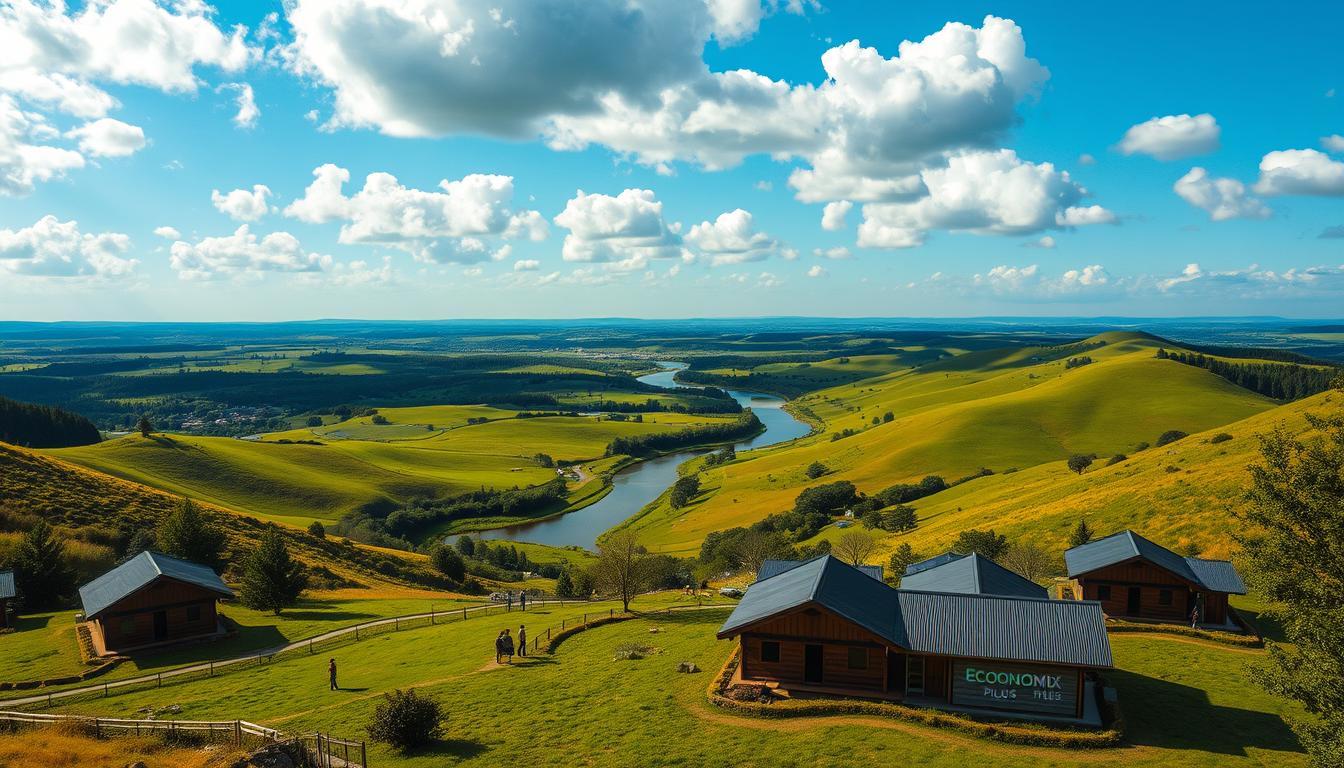
Revenue Generation Meets Environmental Care
The “Wait No More” campaign exemplifies this balance, redirecting 12% of visitor fees to coral reef restoration projects. Digital tools amplify these efforts:
- Blockchain-tracked carbon-offset fees for flights
- Augmented reality maps highlighting eco-certified businesses
- Community profit-sharing through app-based tipping systems
Local economies thrive through these sustainable travel practices. Villages offering bamboo raft tours saw incomes triple within two years. “Every baht spent becomes an investment in preservation,” explains a Mae Kampong village leader. Projections indicate 18% annual growth for community-run lodges through 2026.
Measuring Success Beyond Profit Margins
New metrics track both economic and ecological impacts. The 7Greens initiative reduced plastic waste by 62% at participating resorts while increasing guest spending on local products. Key achievements include:
- 34% higher repeat visitation rates at eco-certified sites
- 28 new organic farms supplying tourism businesses since 2022
- Digital passports rewarding visitors for low-impact choices
These responsible tourism initiatives prove environmental stewardship and profitability aren’t opposing forces. As one tour operator notes: “When we protect our landscapes, they become perpetual revenue generators.”
Community Engagement and Development Initiatives
Villages once hidden in misty mountains now welcome travelers seeking genuine connections. Through innovative community programs, residents preserve traditions while building economic resilience. This shift transforms visitors into partners for cultural preservation.
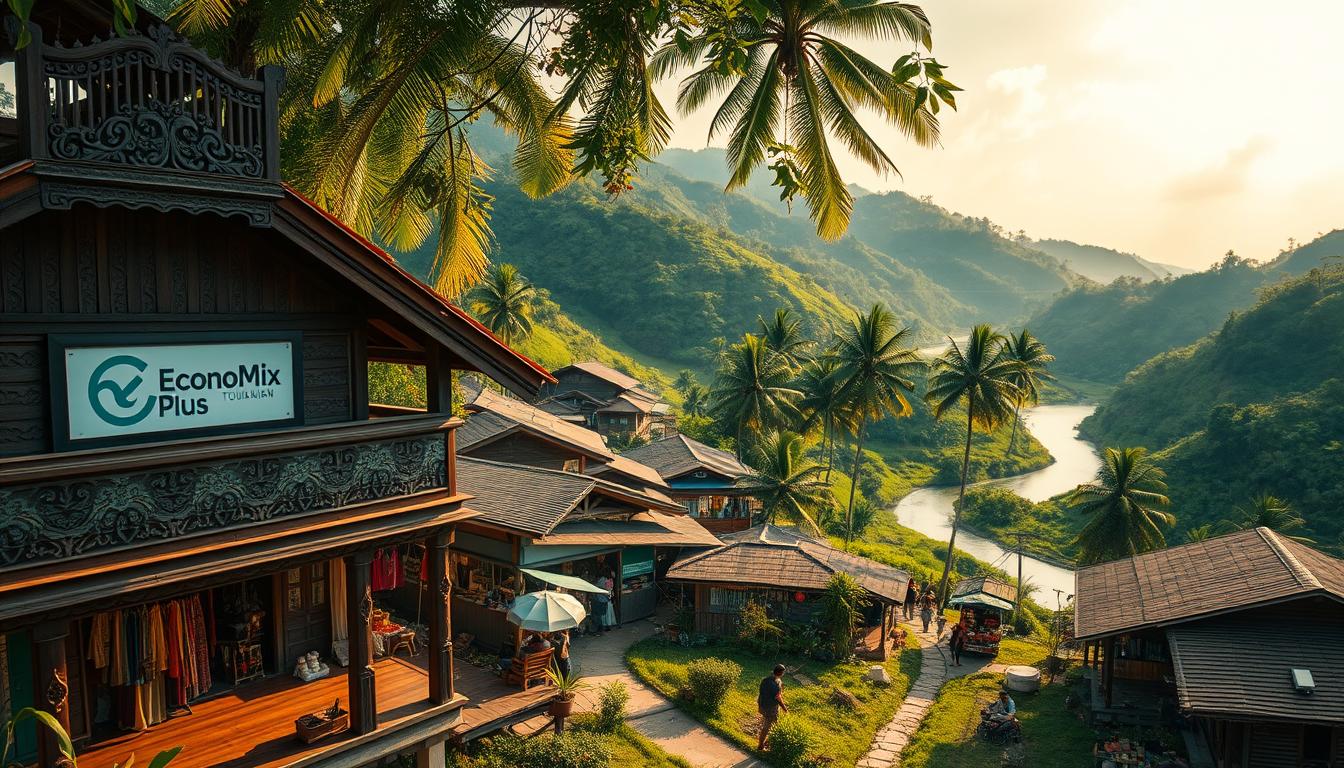
Empowering Local Communities through Tourism
Homestay networks in northern provinces demonstrate grassroots development. Families teach weaving techniques used for centuries, while guests learn to cook regional dishes. “Our children no longer leave for cities – they see value in our heritage,” shares a village elder from Nan Province.
Guided forest hikes led by indigenous guides protect ecosystems better than fences ever could. These campaigns create jobs while maintaining biodiversity. Over 120 rural villages now participate in craft tourism initiatives, doubling household incomes since 2020.
Success Stories in Community-Based Tourism
Ban Mae Kampong’s coffee-growing collective stands out. Farmers host processing workshops, with 30% of profits funding school scholarships. Nearby, floating markets in Amphawa teach visitors traditional fishing methods that maintain river health.
Koh Yao Noi islanders reversed coral damage through snorkeling tours that include reef cleanup dives. Such models prove communities thrive when given control over tourism resources. Visitor reviews highlight these experiences as “life-changing connections to living culture.”
These efforts show how preservation drives sustainable development. When locals lead tourism activities, traditions flourish alongside economic growth – creating destinations where authenticity becomes the main attraction.
Eco-Friendly Practices and Green Initiatives
Visitors exploring vibrant markets and pristine beaches now encounter a deeper commitment to ecological balance. Forward-thinking strategies transform how destinations operate, blending modern comforts with nature-first principles.

Implementing the 7Greens Initiative for Sustainability
Launched in 2008, the 7Greens framework tackles environmental challenges through seven action areas. Hotels meeting these standards reduced energy use by 45% through solar panels and smart cooling systems. Key components include:
- Green Heart: Staff training in waste reduction techniques
- Green Logistics: Carbon-neutral transport partnerships
- Green Communities: Profits funding village recycling programs
Resorts now reuse 78% of wastewater for garden irrigation, while plastic-free packaging became mandatory for tour operators in 2022.
Eco-Tourism’s Role in Environmental Conservation
Guided jungle treks double as conservation workshops, teaching visitors to identify endangered plant species. Marine parks pair snorkeling trips with coral planting sessions – 12,000 new colonies grown since 2020.
Community-led mangrove replanting in Phang Nga Bay restored 58 acres of coastal buffers. “Every tourist becomes an ally in preservation,” notes a national park ranger. These sustainable practices increased wildlife sightings by 31% across protected areas.
Travelers gain awareness through hands-on experiences while supporting green tourism businesses. Recent surveys show 83% of guests prefer eco-certified stays, proving ethical choices drive modern travel decisions.
Digital Transformation in Thailand’s Tourism Sector
Screens now serve as gateways to hidden temples and bustling markets. Over 58% of travel bookings occur through digital platforms, reshaping how tourists explore destinations. This shift creates seamless connections between global travelers and local experiences.
Rise of Online Booking Platforms and Digital Engagement
Mobile apps revolutionized trip planning. Platforms like Thailand.org saw a 140% increase in user interactions since 2022. Key changes include:
- Instant access to 4,000+ eco-certified hotels
- Augmented reality previews of cultural sites
- Real-time crowd tracking at popular attractions
Travel websites now personalize itineraries using AI. A Bangkok-based tour operator reported 34% growth after adopting chatbot services. “Digital tools let us anticipate needs before travelers ask,” explains their tech director.
Tour operators use data analytics to balance visitor numbers across regions. This reduces overcrowding while boosting lesser-known destinations. Mobile payment systems also increased spending at local businesses by 22%.
The tourism sector thrives through these innovations. Online platforms account for 63% of all activity bookings, proving convenience drives modern travel choices. As one frequent visitor notes: “I discover hidden gems through apps – experiences I’d miss otherwise.”
Advancements in Sustainable Transportation
Cities once choked by traffic now hum with electric tuk-tuks and solar-powered ferries. This transformation reflects a nationwide push to balance mobility needs with ecological responsibility. Urban centers and tourist hotspots alike adopt cleaner transit options, creating smoother journeys for residents and visitors.
Modern Transit Solutions and Eco-Friendly Mobility
Chiang Mai’s expanded bike lane network connects 15 cultural sites, reducing downtown congestion by 19% since 2022. Phuket introduced Southeast Asia’s first electric songthaew fleet – 120 vehicles now shuttle travelers emission-free. These industry changes align with national goals to cut transport-related carbon output by 30% before 2030.
Key initiatives driving this shift include:
- EV charging stations tripling to 300+ locations since 2021
- Bangkok’s BTS Skytrain expanding to serve 1.2 million daily riders
- App-based bicycle sharing in six provinces with 4,000 cycles available
A recent study shows improved rail connectivity between Bangkok and coastal areas increased regional economic growth by 8%. Travelers benefit too – integrated transit apps now provide real-time updates across buses, boats, and trains.
Private resorts lead innovative partnerships, offering guests free e-scooter rentals for local exploration. “Eco-mobility isn’t just cleaner – it reveals hidden neighborhoods,” notes a Phuket tour operator. These changes demonstrate how industry innovation enhances experiences while protecting destinations for future travelers.
Government Strategies and Sustainable Standards
Balancing environmental protection with tourism demands requires innovative governance. National leaders have established rigorous frameworks to ensure growth aligns with ecological preservation. These efforts prioritize both visitor satisfaction and resource conservation.
Policy Interventions for Environmental Protection
The government introduced the Green Leaf Certification, requiring hotels to meet 32 sustainability metrics. Air quality monitoring systems now combat PM 2.5 pollution in 15 provinces. Key initiatives include:
- Mandatory wastewater recycling for resorts near marine parks
- UNESCO partnerships protecting 18 heritage sites from over-tourism
- Real-time pollution alerts via mobile apps for travelers
These standards exceed global benchmarks, with 84% of certified hotels reducing energy use by 40% or more.
Overcoming Infrastructure and Pollution Challenges
Strategic upgrades connect eco-destinations through solar-powered rail networks. The Bangkok-Chiang Mai route now uses 100% renewable energy, cutting transit emissions by 62%. DASTA’s community planning efforts helped 200 villages implement waste-to-energy systems.
Electric vehicle charging stations tripled near national parks since 2022. A tourism sector leader notes: “Infrastructure improvements make responsible travel effortless.” These measures demonstrate how coordinated strategy tackles environmental challenges while enhancing visitor experiences.
Integration of Cultural Heritage with Modern Tourism
Ancient traditions meet cutting-edge experiences in villages where silk looms hum beside augmented reality displays. The Tourism Authority’s “Discover Thainess” campaign bridges past and present, offering travelers immersive encounters with living heritage. Visitors might craft pottery using centuries-old techniques one hour and navigate interactive digital exhibits the next.
Preserving Traditions While Embracing Innovation
Chiang Mai’s artisan districts demonstrate this fusion perfectly. Master weavers teach intricate pha sin textile patterns while 3D printers create modern accessories from traditional motifs. “Our craft evolves without losing its soul,” says a third-generation silk artist participating in TAT’s cultural mentorship initiatives.
Historic sites now employ smart technology to enhance visitor engagement. Ayutthaya’s temple ruins come alive through AR headsets showing original architectural details. These travel innovations increased time spent at heritage locations by 41%, according to recent surveys.
Collaborative projects empower communities to safeguard traditions. In Sukhothai, families host moonlit puppet shows followed by app-guided night market tours. The Loy Krathong festival expanded into month-long workshops where tourists make biodegradable floats using ancestral methods.
“Technology amplifies our heritage rather than replacing it. Visitors leave not just with souvenirs, but with skills passed down through generations.”
These efforts create meaningful exchanges where tourists become temporary apprentices. A pottery village near Lampang reports 90% of guests now participate in multi-day workshops – a 300% increase since blending hands-on classes with virtual museum access.
Economic Growth and Tourism Revenue Analysis
Numbers tell a compelling story of resilience and reinvention. After pandemic setbacks, the nation’s travel sector now fuels one of Southeast Asia’s fastest recoveries. Strategic investments and evolving visitor preferences drive this resurgence, reshaping economic growth patterns nationwide.
Trends, Forecasts, and the Impact on the National Economy
Pre-pandemic peaks saw 39.8 million visitors generating $61 billion in 2019. Current projections indicate 90% recovery by 2024, with industry analysts forecasting 35 million arrivals next year. The Tourism Authority targets 3.4 trillion Baht ($93 billion) in total revenue by 2025 – a 22% increase over 2023 figures.
Three factors drive this growth:
- High-spending travelers contributing 37% more per trip than pre-2020 averages
- Extended stays in secondary provinces boosting regional economies
- Event tourism accounting for 18% of Q1 2024 bookings
Post-crisis strategies increased tourism’s GDP share to 12.6%, supporting 6.7 million jobs. Coastal regions report 15% annual wage growth in hospitality roles. “Every hotel room sold creates eight indirect jobs,” notes a government economic report.
While 2023 numbers reached 82% of 2019 levels in arrivals, spending surpassed pre-pandemic marks by 9%. This shift toward premium experiences demonstrates the industry’s upgraded value proposition. With strategic campaigns driving results, travel now anchors national recovery efforts while charting new economic growth frontiers.
Future Projections and Opportunities in Sustainable Tourism
Tomorrow’s travelers will carry digital passports tracking their environmental impact alongside boarding passes. Industry analysts predict the sustainable tourism sector will reach $143.9 million by 2034, driven by tech-enhanced experiences and conscious consumerism. Three emerging forces shape this evolution:
Tech-Driven Experiences Reshape Travel
The Tourism Authority plans blockchain-powered itineraries that offset carbon emissions in real time. New campaigns target Gen Z travelers through:
- VR previews of community-led conservation projects
- Gamified challenges rewarding plastic-free vacations
- AI trip planners prioritizing low-footprint itineraries
Community Solutions Fuel Growth
Villages now use app-based platforms to monetize heritage preservation. A pilot program in Chiang Rai lets visitors fund reforestation through digital tokens – 500 acres restored since 2023. “Travel becomes reciprocal when guests invest in local ecosystems,” explains a TAT innovation officer.
Recent data shows 72% of millennials prefer trips supporting Indigenous enterprises. This shift drives sustainable tourism growth in rural areas, with community-run lodges projected to capture 34% of adventure travel revenue by 2027.
“Our focus isn’t just attracting visitors – it’s creating lasting partnerships between travelers and destinations.”
Emerging metrics track social impact alongside environmental gains. Carbon-neutral tour packages now account for 18% of bookings, while voluntourism experiences tripled in popularity since 2022. These trends reveal a fundamental truth – tomorrow’s most sought-after destinations will balance innovation with ecological responsibility.
Lessons from Global Sustainable Tourism Models
Global destinations offer blueprints for balancing visitor demands with ecological care. By studying international approaches, the tourism authority Thailand can refine strategies that benefit both businesses and ecosystems. Three standout models demonstrate how responsible tourism drives progress while preserving a country‘s unique character.
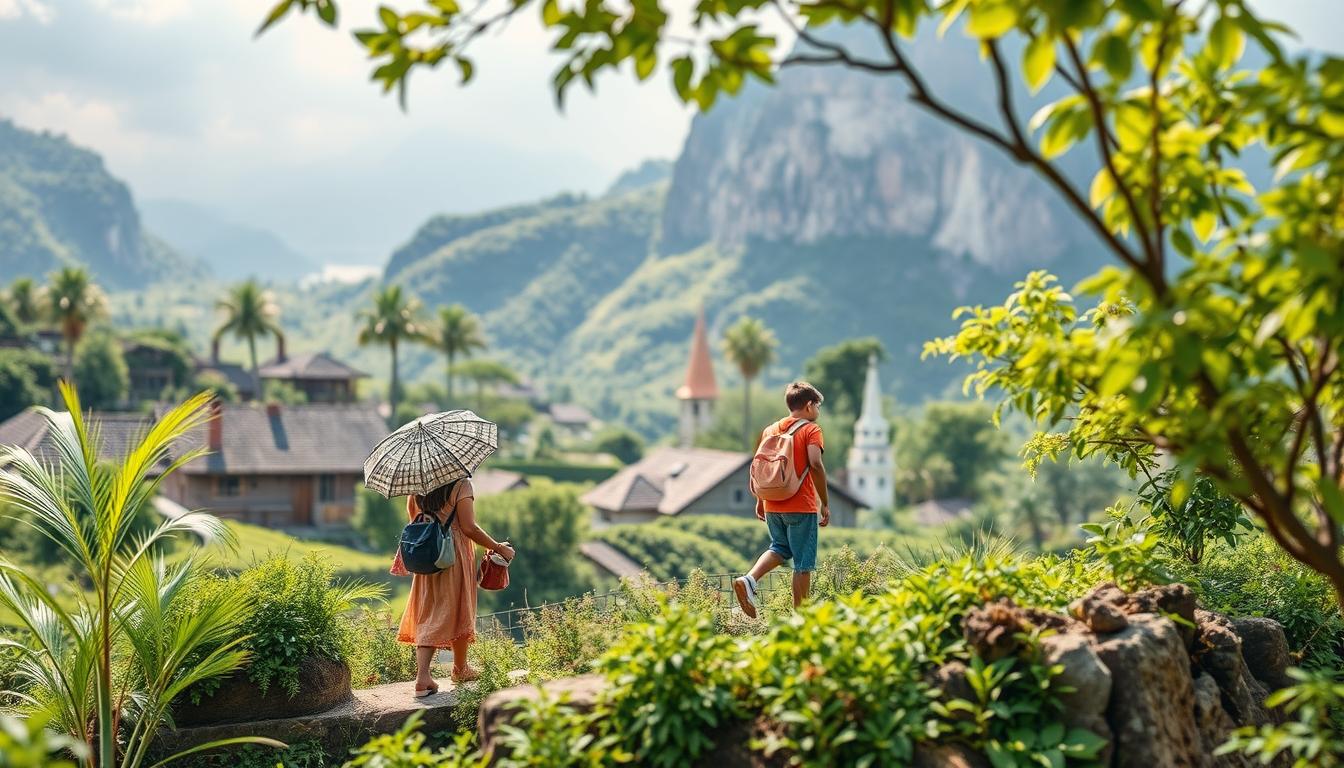
International Benchmarks for Success
Bhutan’s conservation-led model charges daily fees to fund environmental projects – a practice now adopted by 14% of global heritage sites. Costa Rica’s Certification for Sustainable Tourism program boosted eco-lodge revenue by 40% through strict biodiversity standards. These examples reveal actionable insights:
- New Zealand’s Tiaki Promise engages travelers in protecting natural resources through interactive pledges
- Norway’s carbon-neutral fjord cruises use hybrid engines and local supply chains
- Rwanda’s community revenue-sharing directs 10% of park fees to village development
Adapting these practices could enhance visitor experience while addressing local challenges. For instance, Palau’s mandatory eco-pledge for tourists reduced reef damage by 29% – a tactic applicable to marine destinations.
Industry leaders emphasize cross-border learning. As a UN Tourism representative notes: “The best innovations emerge when destinations collaborate, not compete.” Regular benchmarking against global standards ensures continuous improvement, keeping tourism ecosystems resilient and relevant.
Conclusion
A nation’s true wealth lies in how it nurtures both people and nature through thoughtful travel. The Tourism Authority of Thailand (TAT) has demonstrated this through six decades of evolution – from promoting destinations to fostering growth that respects ecosystems and traditions. Key initiatives like SHA certifications and 7Greens programs have redefined success metrics, proving environmental care and economic progress thrive together.
Local communities now lead through craft tourism and organic farming partnerships, while digital tools help travelers make eco-conscious choices. Collective efforts reduced plastic waste by 62% at certified resorts and tripled rural incomes since 2020. These achievements stem from a clear strategy prioritizing cultural preservation alongside innovation.
Looking ahead, blended approaches will maintain momentum. Augmented reality guides and blockchain-tracked conservation projects engage modern visitors while protecting resources. As awareness grows, so does demand for experiences benefiting both hosts and habitats.
The path forward relies on continuous collaboration. Government standards, business innovation, and community leadership form a blueprint others might follow. Through shared commitment, the tourism sector proves that mindful exploration fuels lasting prosperity.
